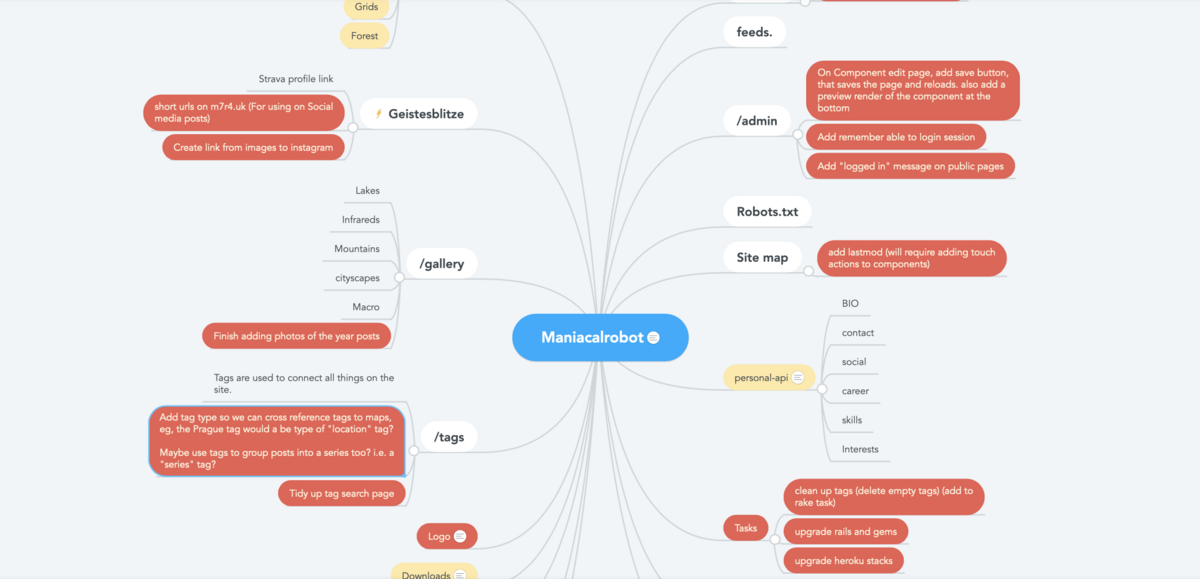Using mind mapping software for project development
One of the plans for this year, a part from staying at home reminiscing of what travel used to like, was to focus on building this site and expanding the features that it provides. First, a little background. This site is 100% custom, it's not an 'off the shelf' template. everything you see here has been built, and designed by me. Over the years, I've tried a many different approaches to keeping track of things that need to be done, or ideas to implement, and bugs that need to be squashed.
Now, there are many project management tools available, that would fit this purpose, from simple task lists, to full blown tools providing reporting, gantt charts, agile stories, and kanban boards. For many projects, these tools can be very helpful, but for just me and this site, every one of them has always been overkill. I've tried to use these tools, but the complexity has just got in the way. I always kept finding myself going back to using a plain text file (well, actually an Apple Notes file for easy syncing between devices).
The problem of using text files
Text files are great for many things. They are simple, they can have their own structure. You can mix bullet points with text. They work everywhere. But, they have their downsides too, it's very hard to provide context within the document. Ideas that might be connected, can be separated into different sections, and loose context of how they relate to the wider subject.
Using mind mapping to keep track of things
I've always been intrigued by the idea of mind mapping. Connecting thoughts with links and hierarchies, and using colours to disguise intent behind each idea. But unfortunately, I've never had a good subject to play with them properly. It's very hard to just pickup and use a new piece technology without a good reason to need to use it.
When I first saw Mindmeister being demoed at a Ruby conference in Vienna, I suddenly had the thought that this could be a really good way to finally have a process to keep track of my plans for maniacalrobot.co.uk.
How I use Mind Meister
All mind maps are built around a simple subject, for me, this is simply "Maniacalrobot", the name of the site. Top level sections of the site are simple black text in white bubbles. "Geistesblitze" (Brainstorms in English) is a special Mindmeister node that stores inputs from the Apple Watch app, for quickly jotting down ideas. Plain black text is just for any level under the top sections.
Red bubbles, are things that need to be done, action items, either new features, or bugs. They're typically short descriptions of the action, enough for me to know what the problem was at the time I created the node.
Yellow bubbles are ideas. Things that might becomes Red action bubbles, they might get deleted, but for now, it's for keeping track of ideas.
Using this simple mind mapping pattern, at a quick glance, I can see the back log of action items and where in the structure of the site they are. I can quickly sketch out new sections, and check for overlap in features, or areas that need work.
So far using this system, I've found myself to be far more productive when building new features and fixing bugs. What makes this system, different to most project management tools, is that the status of each idea of action is irrelevant. There is no task Icebox, no work in progress or done queues. When a red bubble is completed, it simply gets deleted, or turned into a structural node if that makes more sense. This works great for maniacalrobot.co.uk, because it's just me at the end of the day, I don't need to keep the history of every feature or bug. When it's done, it's done, and it can be deleted.
